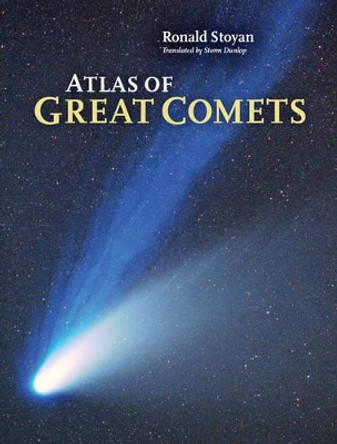Description
A revolutionary deep sky atlas, designed for the visual observer, showing all deep sky objects according to their telescopic visibility.
About the Author
Ronald Stoyan is Editor-in-Chief of interstellarum, and the proprietor of the independent German publisher Oculum-Verlag, which specializes in amateur astronomy books. He is the founding director of the German deep sky organization 'Fachgruppe Deep Sky' and has authored or co-authored twelve books on practical astronomy, including Atlas of the Messier Objects, The Cambridge Photographic Star Atlas and the Atlas of Great Comets. Stephan Schurig is a web and graphics design expert. Being an observer himself, he understands the specific needs of celestial cartography and its presentation. He is co-author of Germany's most popular planisphere, and is the designing author of a unique annual poster showing events in the night sky.
Reviews
'Co-authors Ronald Stoyan and Stephan Schurig have created a masterpiece - an atlas that not only plots thousands of stars and deep sky objects but also, through symbols and color codes and shading, shows their visibility through telescopes of various apertures. A perfect marriage between star atlas and observing guide, the interstellarum Deep Sky Atlas is a must-have for the serious amateur astronomer.' Glenn Chaple, Astronomy magazine columnist
'Unusual features of the atlas include marking up dark nebulae, something often overlooked on modern star atlases, and marking up many deep sky objects by popular name as well as their common catalogue numbers. The fine detail charts of many areas of sky including common Abell clusters is also a nice touch. Another nice touch is the use of the visibility criteria calculated from the software Eye and Telescope which gives you some idea of what you may be able to see. Overall I think this is the best addition to the deeper sky atlases that has come out in a long time and will certainly be a major part of my observing kit from now on.' Owen Brazell, Galaxies Section Director, The Webb Society
'Some people think that the time of the large, printed sky atlas is over. This is due to the great success of planetarium programs with all their digital features. Indeed, the paper versions get rarer, but this does not diminish their value. They are still essential, both for preparing an observing session and at the telescope. So the new interstellarum Deep Sky Atlas is much appreciated. This is mainly due to its sophisticated concept and perfect production. The atlas is both comprehensive and practical. It offers a complete set of deep-sky objects, chosen by the concept of observability. The presentation is excellent. The atlas will be a helpful companion - at day and night. The interstellarum Deep Sky Atlas is a must for every observer - against all digital temptations.' Wolfgang Steinicke, Nebulae and Clusters Section Director, The Webb Society
'Ronald Stoyan and Stephan Schurig have accomplished something new with the interstellarum Deep Sky Atlas. The concept is simple. Items are colored according to their brightness. The fainter the color, the more difficult the object is to observe visually. The front of the atlas gives rankings for 4", 8", 12" and larger telescopes, so given your instrument, you have immediate access to a quick reference of available targets. Physically the size is quite handy. With stellar magnitudes dropping to around 11, the maps are detailed enough to find objects visually, but not so detailed that one is overwhelmed by the field. Additionally, the individual maps are not so large as to be unwieldy in the field. Concerns that the colors would be hard to differentiate under a red flashlight were unfounded. It's not the specific color that matters but the intensity. It's not often that an atlas brings something new to the table, but this one has managed it.' Tom Trusock, Head Forum Administrator, cloudynights.com
'... if you enjoy a detailed, well-thought-out paper atlas, I urge you to consider the interstellarum Deep Sky Atlas. It combines all the best attributes of the three most popular atlases already available in our hobby, all the while eliminating many negatives. It's compact and lightweight. It has a substantial number of objects and catalogs plotted, and it's geared towards observers of all levels. It brings a novel method of categorizing deep-sky objects that proves quite effective ...' Dragan Nikin, Astronomy Technology Today
Book Information
ISBN 9781107503380
Author Ronald Stoyan
Page Count 264
Imprint Cambridge University Press
Publisher Cambridge University Press
Weight(grams) 1400g
Dimensions(mm) 280mm * 285mm * 25mm






